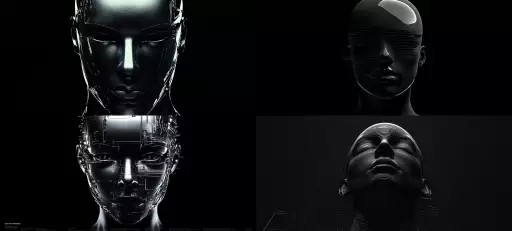Explore the Best AI Image Gallery

AI: The Artists New Muse: Exploring the Impact of AI on Graphic Design
The realm of graphic design, once dominated by human creativity and technical skill, is undergoing a profound transformation with the advent of artificial intelligence (AI). AI-powered tools are rapidly changing the way designers conceptualize, create, and execute visual content, blurring the lines between human and machine artistry.
Applications of AI in Graphic Design
From logo design to web layouts, AI is making its mark across various aspects of graphic design. Some key applications include:
- Logo Generation: AI algorithms can analyze brand guidelines and generate unique logo concepts based on specific requirements, offering designers a starting point for further refinement.
- Image Editing and Manipulation: AI-powered tools can automate tasks such as removing backgrounds, resizing images, adjusting colors, and even generating realistic textures, saving designers valuable time and effort.
- Typography Optimization: AI can analyze text content and suggest font pairings, styles, and layouts that enhance readability and visual appeal.
- Web Design Automation: AI can create basic website templates based on user preferences, streamlining the web design process.
The Benefits of AI in Graphic Design
The integration of AI into graphic design workflows offers several advantages:
- Increased Efficiency: AI automation can handle repetitive tasks, freeing up designers to focus on more creative and strategic aspects of their work.
- Enhanced Creativity: AI can generate novel ideas and concepts, inspiring designers to explore new directions and push creative boundaries.
- Cost-Effectiveness: AI tools can reduce the need for manual labor and streamline design processes, potentially lowering overall costs.
- Accessibility: AI-powered design platforms can make design tools more accessible to individuals with limited technical skills or resources.
Ethical Considerations
While AI holds immense potential for graphic design, it also raises important ethical considerations:
- Job Displacement: The automation of design tasks by AI could lead to job losses in the creative industry.
- Bias and Fairness: AI algorithms are trained on existing data, which may contain biases that reflect societal inequalities. This can result in AI-generated designs that perpetuate harmful stereotypes or discrimination.
- Intellectual Property: The ownership of AI-generated designs raises legal questions about copyright and intellectual property rights.
- Transparency and Accountability: The decision-making processes of AI algorithms can be opaque, making it difficult to understand how AI-generated designs are created. This lack of transparency can raise concerns about accountability when AI systems produce undesirable outcomes.
Future Trends
The future of AI in graphic design is brimming with exciting possibilities:
- More Sophisticated Generative Design: AI algorithms will become increasingly capable of generating complex and nuanced designs that meet specific user needs and preferences.
- Personalized Design Experiences: AI will enable designers to create highly personalized visual content tailored to individual users, enhancing engagement and customer experiences.
- Integration with Other Technologies: AI will seamlessly integrate with other emerging technologies such as virtual reality (VR), augmented reality (AR), and blockchain, creating new frontiers for creative expression and collaboration.
Conclusion
AI is revolutionizing the field of graphic design, empowering designers with powerful tools to enhance their creativity, efficiency, and impact. While ethical considerations must be addressed, the future of AI in graphic design holds immense potential to transform how we create and interact with visual content.